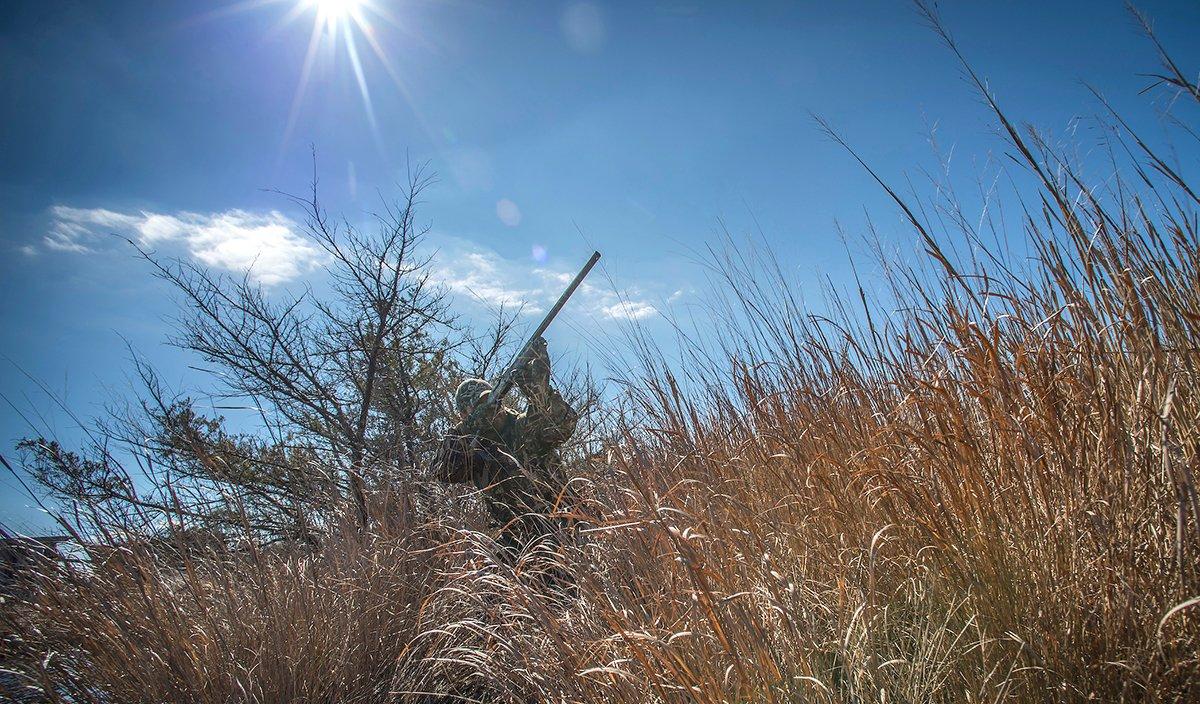Often maligned, this method works well if done ethically
Pass-shooting gets a bad name, and it's easy to see why.
For our purposes, let's define pass-shooting as firing at birds as they fly by instead of flushing or working decoys. Often, that practice involves overeager hunters staked out along refuge-boundary firing lines taking long-distance fliers at ducks or geese. That typically results in lots of empty hulls, several cripples that cannot be recovered and, if a golden BB finds home, one or two birds for the pot. That version of pass-shooting isn't hunting; it's foolish, unprincipled shooting. And it ain't cool.
But it doesn't need to be that way. Conscientious, common-sense pass-shooting is an ethical and effective way to take waterfowl. In fact, it's sometimes your best option. Let's look at situations when disciplined pass-shooting can rule the day.
Opening Day
Face it, many openers at highly pressured public areas are nothing more than a chaotic exercise in pass-shooting. Sure, put out decoys if you like, but when birds get stirred into a panic by nonstop gunfire and frenzied activity, they usually just try to flee danger and find safe zones. A few might decoy, but most are in full escape mode, so if you want to kill ducks, you'll be pass-shooting — whether you like it or not.
In such situations, I watch for travel areas where ducks want to fly. These might include "funnels" over creeks, channels, tree lines or pinch points of land. Then I set up so I can shoot to my left, right and overhead, throw out a few decoys to make myself feel better and watch for streaking ducks. In areas with heavy cover, I try to take ducks as they're coming at me, not when they're directly overhead or in front of me. That way, their momentum carries them closer instead of 40 yards downrange.
Prairie Passages
In big country with multiple bodies of water, such as the prairies, ducks often trade between sloughs, ponds, creeks or rivers to feed, loaf or roost. Ideally, you want to hunt destination waters over decoys, but that might not always be possible. In those cases, there's nothing wrong with identifying a waterfowl trading route and putting yourself in position to shoot passing birds.
I've done this many times in the Dakotas when a pond or field I'm hunting goes cold. If I've noticed ducks or geese trading between sloughs, lakes or fields, I'll find a high point along their route, hunker in cover, hide the dog and take any birds that present an opportunity. Sometimes, ducks will even follow dry creek beds or slough arms on their way to big water. Taking a limit this way isn't quite as satisfying as watching greenheads or honkers hover over your blocks, but it sure beats getting skunked.
Ice Lines, Pinch Points
Diving ducks prefer to fly over water or sometimes follow ice lines, and these situations open pass-shooting opportunities.
Look for points between two large bodies of water where birds might trade. Or, even set up along channels or river mouths where ducks fly to and from big-water roosting areas. Yeah, throw out some decoys to grab their attention and perhaps bring them a few yards closer, but realize that divers are probably just buzzing through these areas, so you'll usually have to pass-shoot them.
Later in the season, when ice builds along shorelines or freezes over bays or inlets, set up along the open-water line to catch passing ducks. Again, decoys might help, but most ducks are probably just flying by. I once shot a limit of big-water ducks that followed a shoreline ice shove while working into a south wind, and we never had a chance to put a decoy in the water.
Bottom Line
Don't be afraid to identify and take advantage of good pass-shooting situations. There's no stigma involved. You're really just observing and adapting. Just follow the simple rule of making sure birds are within range and can be recovered after you shoot them — just as you would when jump-shooting or hunting over decoys.
You'll soon find that pass-shooting adds one more ace to your waterfowl hunting cards.
Click here for more Realtree waterfowl hunting content. And check us out on Facebook.







